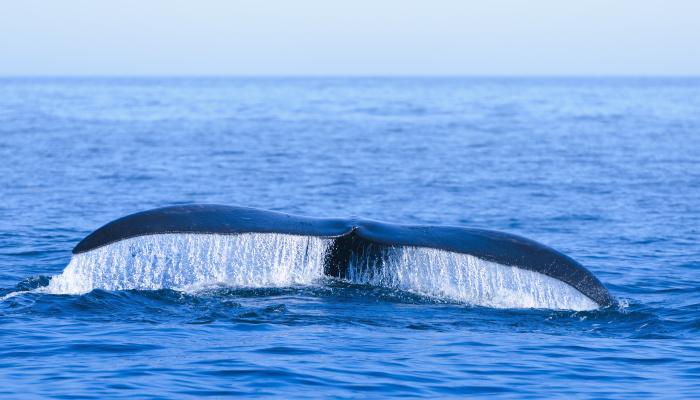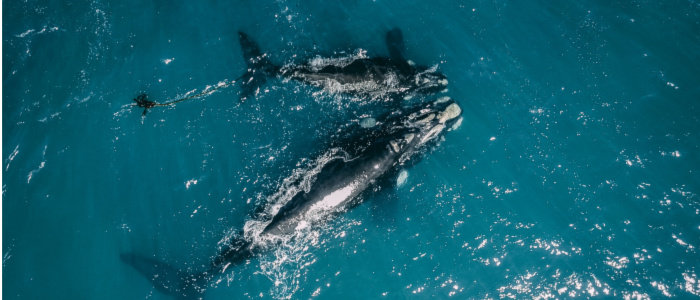Did you know we were greeted with some “whaley” surprising visitors a few weeks back? That’s right – North Atlantic right whales began their winter migration and swam close enough to the Carolina coastline for some to spot.
With bodies the size of buses and characteristic white callouses that frame their face, anyone would be in awe at catching a glimpse of these amazing creatures. However, these particular right whale sightings piqued the interest of scientists and conservationists all along the Atlantic seaboard.
Why? Because, alongside 1,470 other species, North Atlantic right whales are significantly endangered, with approximately only 400 whales remaining. For the first time in a long time, numerous calves have been spotted!
You see, the southeastern United States is the only known area for North Atlantic right whales to give birth. Yet, for the past three birth seasons (known as calving seasons), only 12 calves were documented. This year alone, we’ve already celebrated the birth of 10 new calves! However, the hurdles aren’t over for them yet.
North Atlantic right whales have historically faced hardships related to humans. Their name alone reveals a bit of their history with us; they were considered the “right” whales to hunt because their bodies floated at the surface after perishing, making them easy to reach and retrieve for food. Nowadays, boat strikes, noise disturbances, entanglement and habitat degradation are just of a few of the difficulties North Atlantic right whales are up against.
Climate change impacts are increasingly causing concern for North Atlantic right whales as well. Though the southeastern U.S. is their calving grounds, the northeastern U.S. is their foraging grounds. Yet changing ocean conditions (such as rising temperatures) are causing their food supply to migrate outside of their normal area. This is putting additional strain on right whales as they seek out food elsewhere.
Clearly, the plight of the right whale isn’t an easy one. They join the beloved Kemp’s ridley sea turtle (and plenty other marine life) facing a long list of threats, including us. Policies are in place that play a key role in keeping the North Atlantic right whale population at bay and, hopefully, thriving in the future:
- North Atlantic right whales have been protected by the Endangered Species Act (ESA) since the 1970s. When a species is listed under the ESA, a recovery plan is created and implemented to address major threats. North Atlantic right whales have two designated recovery teams along the east coast working to protect them.
- By falling under the umbrella of the Marine Mammal Protection Act (MMPA), coming into close contact with North Atlantic right whales is illegal; humans, including boats, have to keep their distance.
- National Oceanic and Atmospheric Administration (NOAA) has designated North Atlantic right whales a NOAA Species in the Spotlight, allowing federal resources to be allotted to their protection and care.
So, how can you care for and protect these whales, alongside other endangered species? Together, we can protect what we love, and here’s how:
- Respect their homes by keeping your distance, whether by land or by sea.
- Correctly dispose of your fishing gear (and other litter) appropriately, before it ends up in the ocean.
- If you spot a stranded whale, report it to the South Carolina Department of Natural Resources (SCDNR) wildlife stranding hotline at 1(800) 922-5431.
- Use your voice on matters that are meaningful to you.
- Raise awareness on Endangered Species Day (February 22) by posting a photo of your favorite endangered species and tagging us in it!



